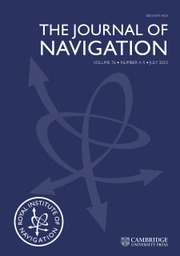Article contents
Evaluating ILS and MLS Sites without Flight Tests
Published online by Cambridge University Press: 21 October 2009
Abstract
Instrument landing systems (ILS) and the upcoming microwave landing systems (MLS) are (or are planned to be) very important navigational aids at most major airports of the world. However, their performance is directly affected by the features of the site in which they are located. Currently, validation of the ILS performance is through costly and time-consuming experimental methods. This paper outlines a powerful and versatile analytical approach for performing the site evaluation, as an alternative to the experimental methods. The approach combines a multi-plate model for the terrain with a powerful and exhaustive ray-tracing technique and a versatile and accurate formulation for estimating the electromagnetic fields due to the array antenna in the presence of the terrain. It can model the effects of the undulation, the roughness and the impedance (depending on the soil type) of the terrain at the site. The results computed from the analytical method are compared with the actual measurements and good agreement is shown. Considerations for site effects on MLS are also outlined.
Information
- Type
- Research Article
- Information
- Copyright
- Copyright © The Royal Institute of Navigation 1989
References
REFERENCES
- 1
- Cited by

